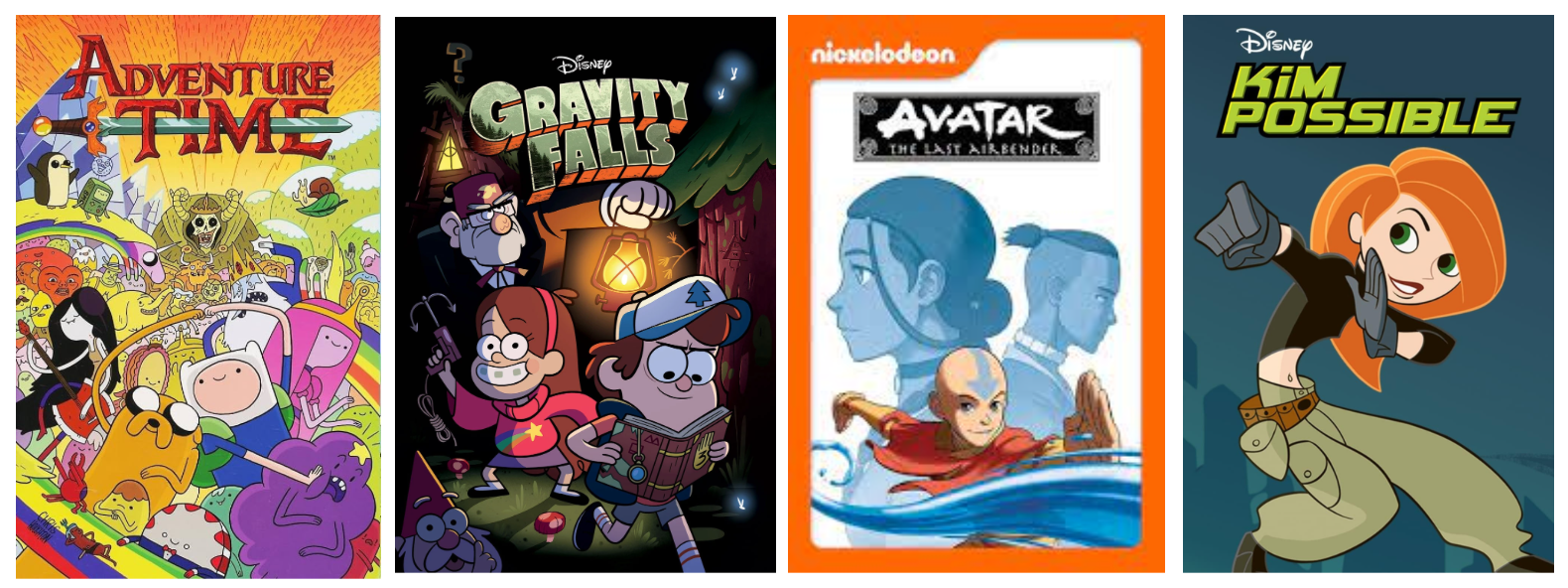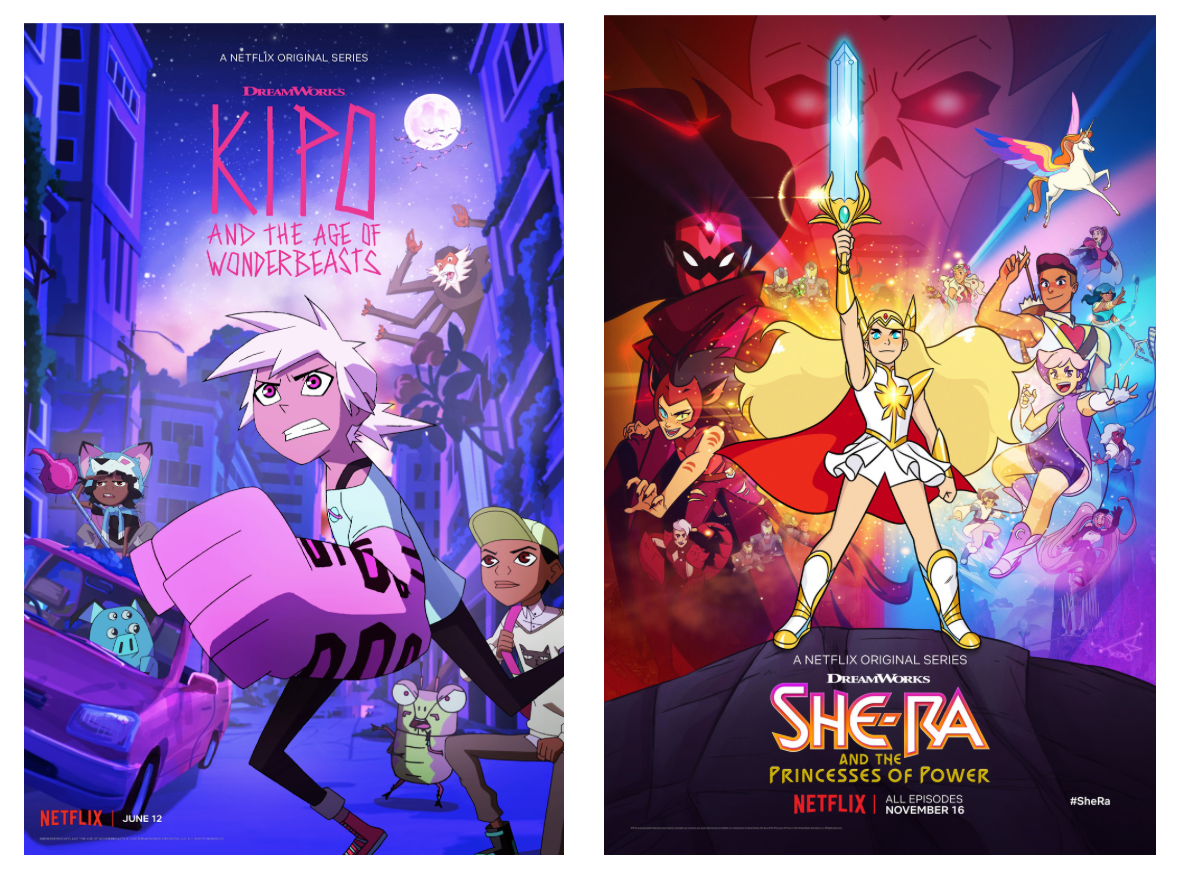Saturday Morning Storytelling: Catching up with Cartoons (as Kids Shows)
Content for children – cartoons and otherwise – has always been a hot commodity, in every sense of the term. Is the resurgence in revisiting cartoons and kid shows with a new inclusion of adult audiences simply a product of nostalgia, or do the stories from our childhood signify something else?
Cartoons used to be seen as something reserved exclusively for childhood. Continuing one’s enjoyment of them well into adulthood if you didn’t have children or younger siblings seemed like a deliberate stay in adolescent stasis, an inability to handle stories with deeper, darker plotlines and explorations, and character development or regressions beyond familiar, well-worn tropes. Despite other countries (most notably Japan) producing animations clearly designed for adult appreciation, it’s only recently that the United States has caught up, producing shows like Bojack Horseman, Midnight Gospel, as well as Invincible (the adaptation of Robert Kirkman’s comic series). I just finished Season 2’s first released part and highly recommend – though be warned. It is decidedly adult with an incredibly brutal scene in the very first episode of the show. There’s gore strewn (literally) throughout most of the show. Animated or not, if you can’t handle blood or violence, this is not something you’re going to be able to stomach.
This isn’t to say that indie animators haven’t for some time been producing meaningful, artistic, and adult-centered animation–or even kids animation that adults can also appreciate–but that the mainstream animation culture in the U.S has decidedly made the form of animation and the genre of kids’ content inextricably interconnected for some time. (I’ll also take the time here to note that I’m not bringing up Rick and Morty, even though it is undeniably part of this new culture of animated shows in the U.S, because doing so beyond this note would entail an extensive mention of the toxic fandom the show has garnered, and would perhaps only bolster the point that maybe cartoons do have a hand in regression in certain adult viewers/consumers).
Adult Swim with its version of adult animation has existed since 2001, and there have been shows like Family Guy and American Dad forever. But these aren’t the kinds of cartoons considered mature in the sense of development, but only in their reliance on crass, above PG-13 humor. While crass humor isn’t always a sign of intellectual or artistic deficiency,there has clearly been a shift in adult-centered animated shows that are attempting to take on serious topics and focus on getting outside of the sit-com genre that mainstream adult animation in the U.S has historically been relegated to. There are also shows that are experimenting more even as they rely on the familiarity of sitcoms or crass Family Guy-esque humor.
There has also been a newfound appreciation for cartoons like Owl House and even Bluey from adult viewers, despite this content generally being produced with child audiences in mind. Over the pandemic, there has also been a resurgence of streaming childhood shows. I myself rewatched Avatar: The Last Airbender, Adventure Time, Kim Possible, and most recently watched Gravity Falls for the very first time. In fact, these days I find myself returning to so-called kids cartoons for content – but not the cartoons of today. Admittedly, I find a lot of them to be a bit over the top and filled with references I don’t quite get nor do I think the supposed future of humanity should be consuming. (Please, for the love of god, what is Skibidi Toilet? Actually… don’t answer that. Some things are called “viral” for a reason – I’m okay with not being quite yet chronically online.) That isn’t to say that I haven’t enjoyed any. I’ve watched things like Kipo: The Age of the Wonderbeasts and She-Ra: And The Princesses of Power, though the latter of which is a reboot (and I immensely enjoyed, and was appreciative of the WLW representation. Kipo too is remarkably inclusive in a way that doesn’t feel ham-fisted).
I keep finding myself coming back to the familiar shows of my childhood though. In light of the fact we’re getting an Avatar: The Last Airbender live action reboot (as well as childhood show reboots in general), I have to wonder: is it just nostalgia?
The answer is more complicated than just a simple yes or no. Does nostalgia affect how we enjoy the shows of our childhood? Undoubtedly - it’s been scientifically proven: https://www.tandfonline.com/doi/abs/10.1080/14241277.2014.989567 . Do I also think kids content was being considered really differently, even in the mistreatment of cartoons as an inherently childish form of storytelling and entertainment? Yes. Watching Avatar, I was struck by how heavy the show seemed at times as an adult, after I got over the initial delight of rewatching. While there were obvious moments of levity and comedic relief aplenty, the show dealt with topics like loss, trauma, intergenerational cycles of violence, and even genocide (more topical than ever considering world events).
It’s interesting that some of the creative directions the reboot claims to be going in is to increase the maturity for an audience. But many of those who grew up with the show return to it even now (in their 20s and 30s) precisely because the show understands what growing up actually looks like, with all its silver linings and shadows. Characters are flawed like Sokka, who struggled to find power and agency as a nonbender, often manifesting as crude sexist comments. He goes on, however, to learn his own strength– not from his father or an older male figure, but women warriors his own age. What does it mean to strip that character development away for the sake of a more palatable character, as the reboot suggests it will? The so-called children’s version is more compelling to me. We make mistakes, and the only way we become villains in our story is if we refuse to bend to what our narratives want from us– which is kindness, understanding, dedication, humility, respect, loyalty, among other values that Sokka and other flawed characters (including Aang himself) learn. Isn’t that a better lesson? That a flaw is not who you are if you strive for otherwise?
Even Adventure Time grappled with the dark-side of growing up, sometimes in grotesquely fantastical ways (Does anyone remember the Litch? Or even the clown nurses Finn is always afraid of? I don’t blame him as an adult now, though I’ve never particularly been afraid of clowns), with endings often implying possible death. Of course, the next episode would begin and the familiar cast of characters would all be alright. This changed in later seasons, to varying degrees. Character development could come from the smallest of moments or the longest of arcs, and it meant you were rewarded for paying attention to both. From what I have seen, today’s children’s content can depend on flashy gimmicks and cramming as much color and slogan into as short a span of time as possible. Which isn’t to say that there are no quality children’s shows at all. But there is a shift into the gimmick or cutesification that rings empty. I don't think children deserve that, even if it’s cheaper and easier in every sense.
Some things aren’t meant for children. But it’s important to acknowledge that displays of blood or drugs don’t necessarily make a story mature in an intellectual sense. And in many ways, our return to childrens’ stories is a return to storytelling that treats us gently and subtly. While kids today might not have quite the same versions, there are still great shows out there that manage to make difficult topics digestible. And kids’ shows more than ever are important for representation. While shows like Avatar were the first time I felt represented (er, sort of… the guru Aang visits is admittedly a poor analog for South-Asian people and spirituality), kids shows today continue to expand representation and are gentle introductions to the realities of the world. It’s up to us as adult consumers to demand that there’s balance, that children are treated kindly and gently but not coddled or infantilized. And to show artists and producers that children’s content can be just as important and artistic. After all, I have the next episode of Adventure Time cued up right now. And I feel as grown up and mature as I can be.


